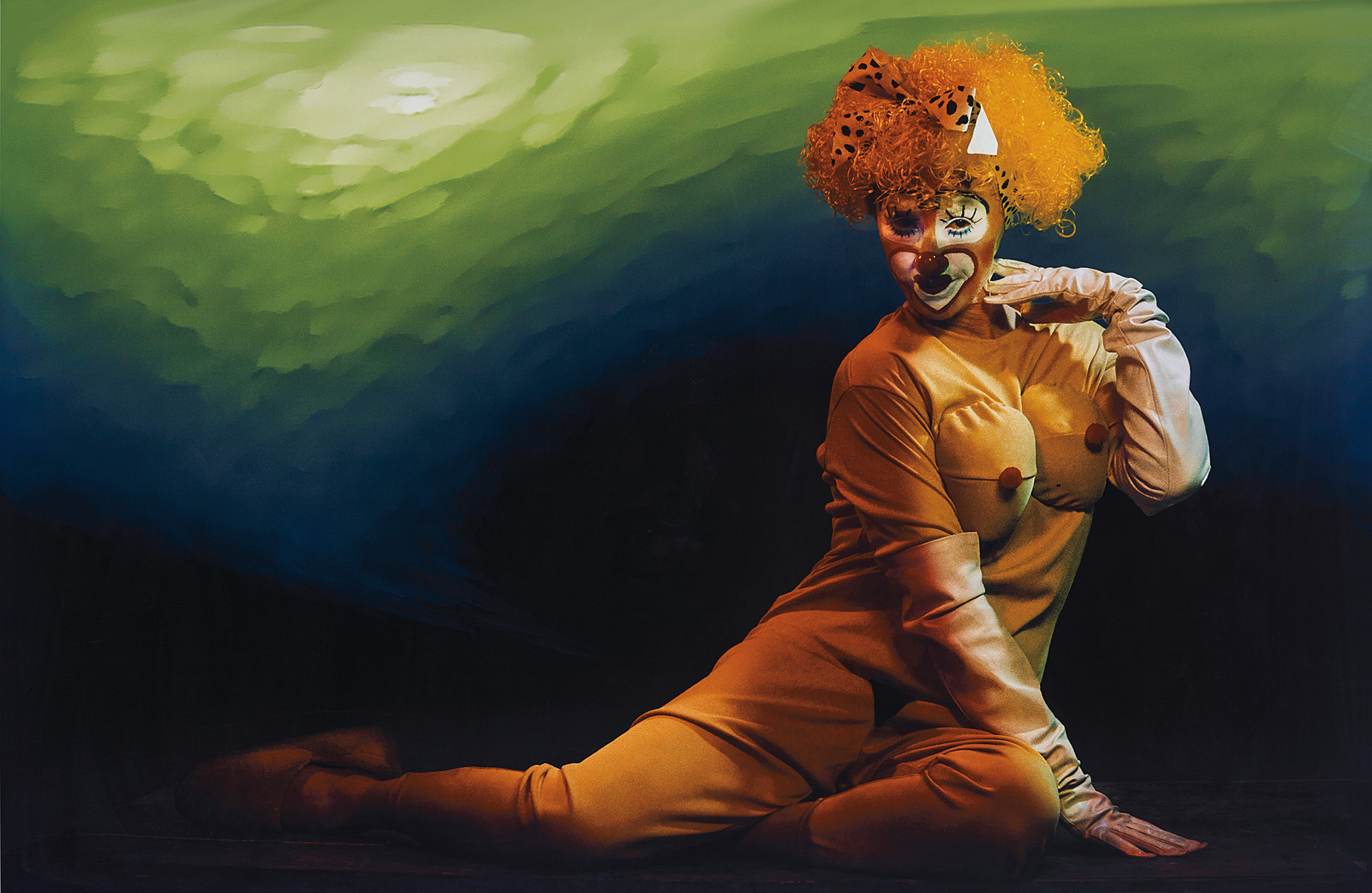



178
Cindy Sherman
Untitled #447
Full-Cataloguing
With the digitally rendered background evoking circus posters, the Clowns simultaneously represent several mental states, from impersonation and hysterical passion to tragedy. Heightening the psychedelic image through her whimsical use of colour, Sherman intensifies the somewhat familiar yet unidentifiable character. In place of the stereotypical clown, Sherman has constructed a series of characters who take on different emotions; wicked, disturbed, cruel and lustful, they are ‘intense, with a nasty side or an ugly side, but also with a real pathos’ (Cindy Sherman, quoted in Betsy Berne, ‘Studio: Cindy Sherman’, Tate Arts and Culture, 5, May/June 2003, p. 38).
Commenting on the series, Sherman notes ‘I’d been going through a struggle, particularly after 9/11; I couldn’t figure out what I wanted to say. I still wanted the work to be the same kind of mixture – intense, with a nasty side or an ugly side, but also with a real pathos about the characters – and [clowns] have an underlying sense of sadness while they’re trying to cheer people up. Clowns are sad, but they’re also psychotically, hysterically happy’ (Cindy Sherman, quoted in Betsy Berne, ‘Studio: Cindy Sherman’, Tate Magazine Arts and Culture, 5, May/June 2003).
An important work by the master of portraiture, Untitled #447 is exemplary of the artist’s profound ability to address the troubled relationship between superficial appearance and inner psychology.
Cindy Sherman
American | 1954Seminal to the Pictures Generation as well as contemporary photography and performance art, Cindy Sherman is a powerhouse art practitioner. Wily and beguiling, Sherman's signature mode of art making involves transforming herself into a litany of characters, historical and fictional, that cross the lines of gender and culture. She startled contemporary art when, in 1977, she published a series of untitled film stills.
Through mise-en-scène and movie-like make-up and costume, Sherman treats each photograph as a portrait, though never one of herself. She embodies her characters even if only for the image itself. Presenting subversion through mimicry, against tableaus of mass media and image-based messages of pop culture, Sherman takes on both art history and the art world.
Though a shape-shifter, Sherman has become an art world celebrity in her own right. The subject of solo retrospectives across the world, including a blockbuster showing at the Museum of Modern Art, New York, and a frequent exhibitor at the Venice Biennale among other biennials, Sherman holds an inextricable place in contemporary art history.